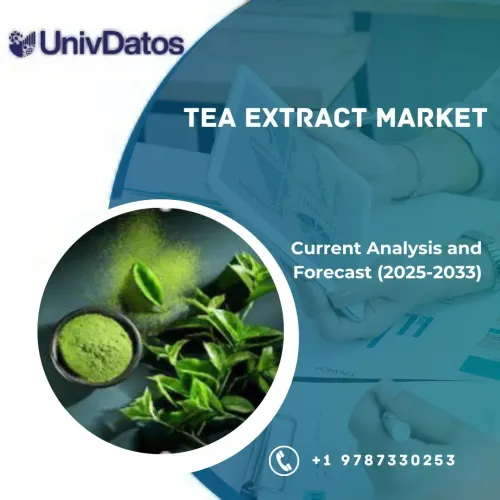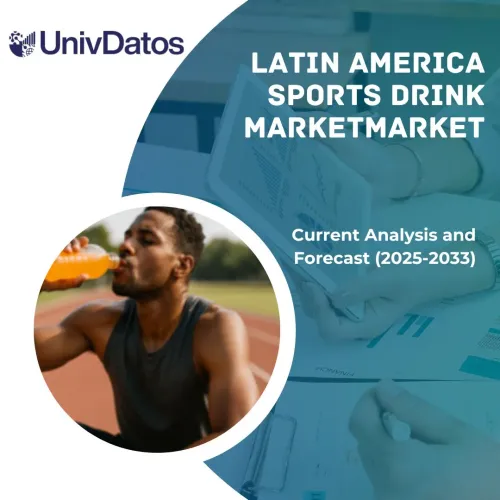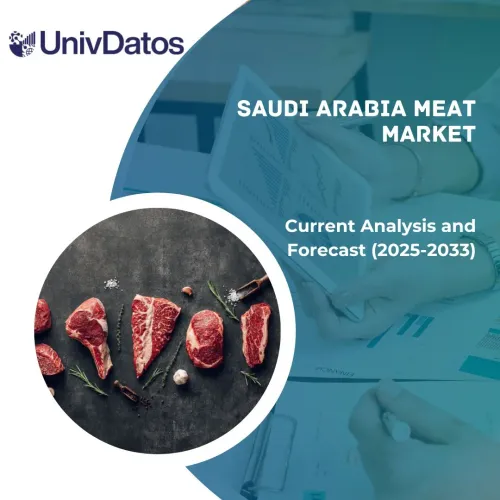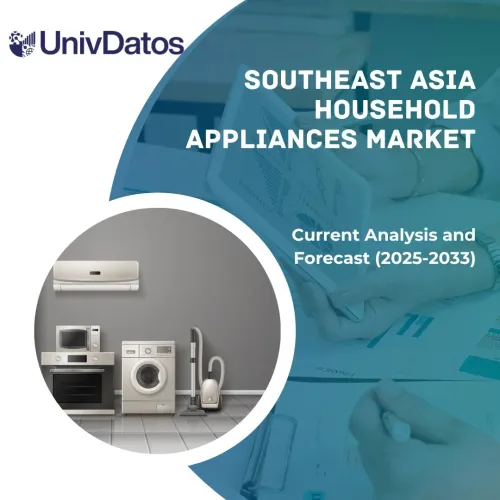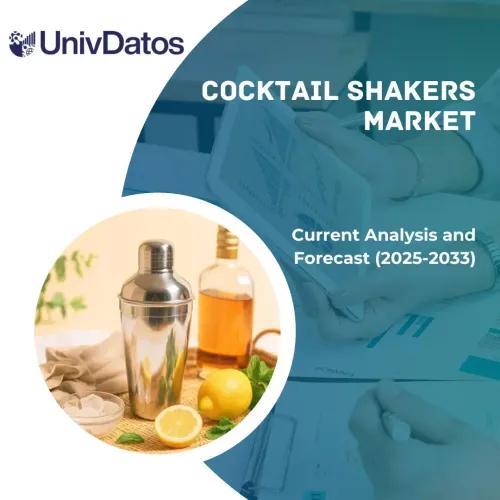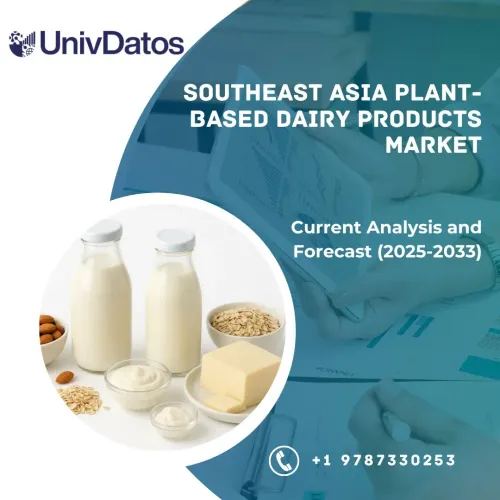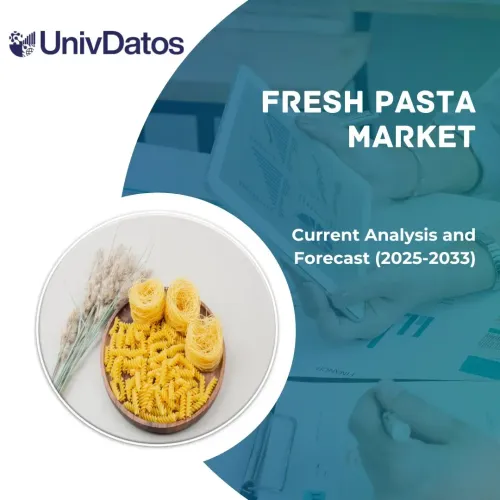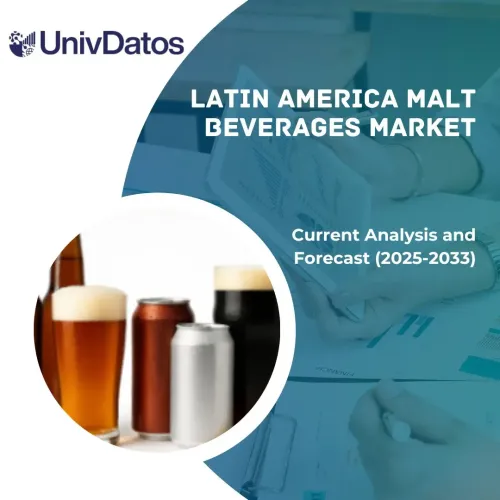- Home
- About Us
- Industry
- Services
- Reading
- Contact Us
Food Traceability Market: Current Analysis and Forecast (2024-2032)
Emphasis on Technology Type (Radio-Frequency Identification, Barcodes, Infrared, Biometrics, and Global Positioning System); Software (Fresh Food Produce, Meat, Poultry & Seafood Products, Dairy Products, Beverage Products, and Others);Application (Fresh Food Produce, Meat, Poultry & Seafood Products, Dairy Products, Beverage Products, and Others); Region (North America, Europe, Asia-Pacific, Rest of the World); and Region/Country
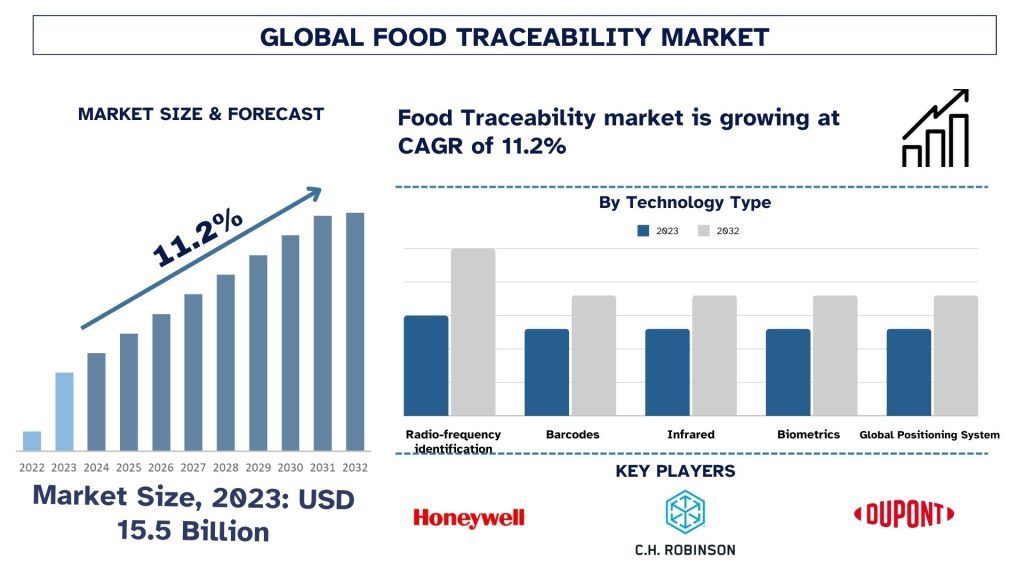
Food Traceability Market Size & Forecast
The Food Traceability market was valued at approximately USD 15.5 Billion in 2023 and is expected to grow at a robust CAGR of around 11.2% during the forecast period (2024-2032). This trend is predicated on higher customer awareness and demand, governmental and industry standards, and digital innovation such as blockchain and IoT.
Food Traceability Market Analysis
Food traceability refers to the systems that trace the flow of food through the food supply chain, including through production, processing, and distribution, and make it possible to locate a product at any stage of the food supply chain. The rapidly rising number of food industries along with the higher number of foodborne diseases are the important factors contributing to the market growth of food traceable. For instance, as per the WHO, an estimated 600 million – almost 1 in 10 people in the world – fall ill after eating contaminated food and 420 000 die every year, resulting in the loss of 33 million healthy life years. Furthermore, the increasing usage of GM crops and the chemicals in the farmlands to grow food is also responsible for the growth of the market.
Food Traceability Market Trends
This section discusses the key market trends influencing the Food Traceability segments as identified by our research experts.
Barcode Segment Transforming Industry
Based on the technology type, the market has been categorized into radio-frequency identification, barcodes, infrared, biometrics, and global positioning system. Among these, the barcode segment has a significant share in the food traceability market. The barcodes permit faster and more accurate transfer and recording of information benefiting the track of work in process or the movement of assets more quickly and precisely. Furthermore, it also helps the food manufacturing plants in product management and its quality checks. Thus, increasing the market size of the segment in the food traceability market.
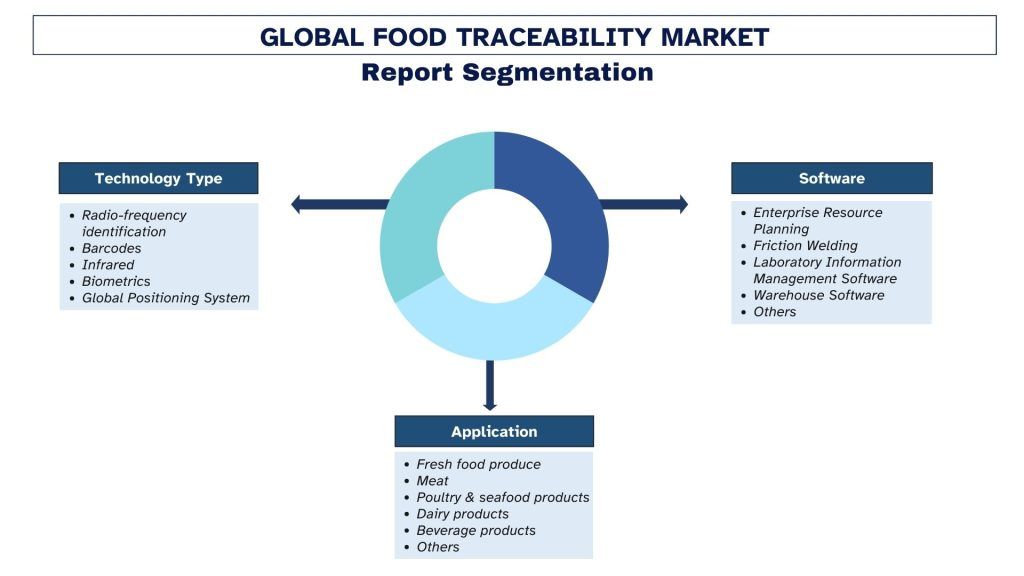
Asia Pacific to hold a significant share of the market
In 2023, Asia Pacific is expected to witness the fastest growth in the global food traceability market. The rising purchasing power and increasing population density in the region are among the important factors responsible for the growth of the food industry in the region. Furthermore, the rising awareness of the consumption of healthy food in the population is also an important factor in the regional growth of the food traceability market.
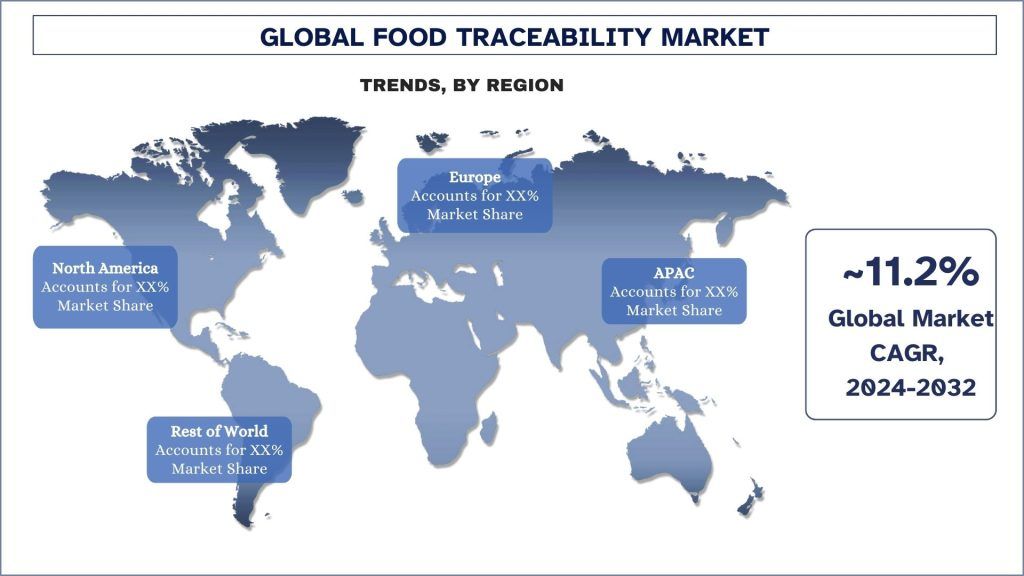
Food Traceability Industry Overview
Food Traceability is competitive, with several global and international market players. The key players are adopting different growth strategies to enhance their market presence, such as partnerships, agreements, collaborations, new product launches, geographical expansions, and mergers and acquisitions. Some of the major players operating in the market are Honeywell International Inc, C.H. Robinson Inc, DuPont Nutrition and Biosciences, Bio-Rad Laboratories, IdentiGEN, IBM Corporation, Intertek Group, Cognex Corporation, MASS Group, Zebra Technologies, etc. Several M&As along with partnerships have been undertaken by these players to facilitate customers with hi-tech and innovative products/technologies.
Recent Development
- In January 2024, SpartanNash announced a partnership with ReposiTrak to introduce a traceability program aimed at enhancing the safety and transparency of its supply chain. Through this initiative, hundreds of suppliers involved in harvesting or handling products listed by the U.S. Food and Drug Administration for food traceability are mandated to provide traceability data to SpartanNash and its wholesale customers
Food Traceability Market Report Coverage
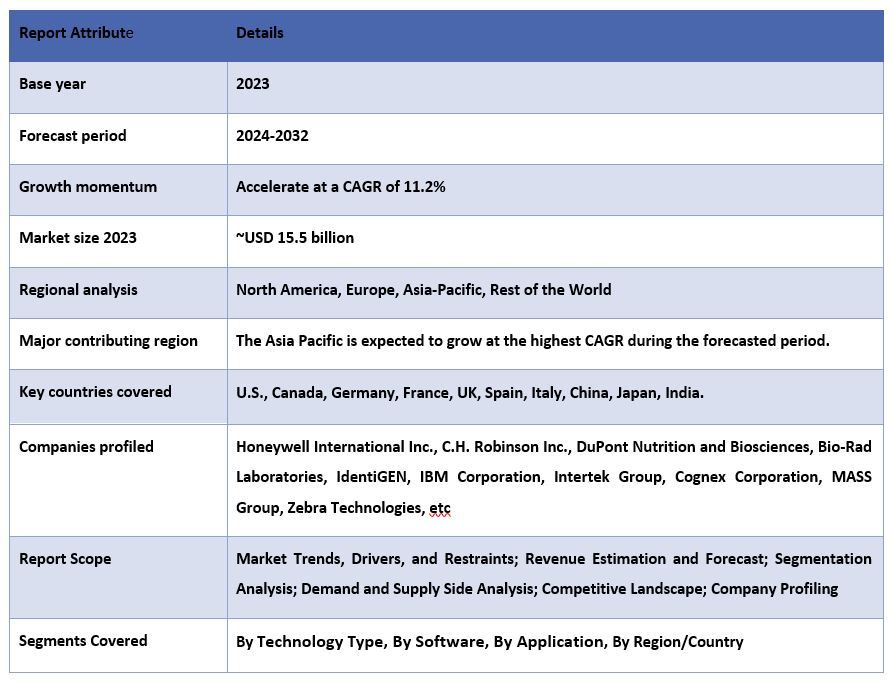
Reasons to buy this report:
- The study includes market sizing and forecasting analysis validated by authenticated key industry experts.
- The report presents a quick review of overall industry performance at one glance.
- The report covers an in-depth analysis of prominent industry peers with a primary focus on key business financials, product portfolios, expansion strategies, and recent developments.
- Detailed examination of drivers, restraints, key trends, and opportunities prevailing in the industry.
- The study comprehensively covers the market across different segments.
- Deep dive regional level analysis of the industry.
Customization Options:
Global Food Traceability can further be customized as per the requirement or any other market segment. Besides this, UMI understands that you may have your own business needs; hence, feel free to connect with us to get a report that completely suits your requirements.
Table of Content
Research Methodology for the Food Traceability Market Analysis (2022-2032)
Analyzing the historical market, estimating the current market, and forecasting the future market of the global Food Traceability market were the three major steps undertaken to create and analyze the adoption of Food Traceability in major regions globally. Exhaustive secondary research was conducted to collect the historical market numbers and estimate the current market size. Secondly, numerous findings and assumptions were taken into consideration to validate these insights. Moreover, exhaustive primary interviews were also conducted, with industry experts across the value chain of the global Food Traceability market. Post assumption and validation of market numbers through primary interviews, we employed a top-down/bottom-up approach to forecasting the complete market size. Thereafter, market breakdown and data triangulation methods were adopted to estimate and analyze the market size of segments and sub-segments of the industry. Detailed methodology is explained below:
Analysis of Historical Market Size
Step 1: In-Depth Study of Secondary Sources:
A detailed secondary study was conducted to obtain the historical market size of the Food Traceability market through company internal sources such as annual reports & financial statements, performance presentations, press releases, etc., and external sources including journals, news & articles, government publications, competitor publications, sector reports, third-party database, and other credible publications.
Step 2: Market Segmentation:
After obtaining the historical market size of Food Traceability, we conducted a detailed secondary analysis to gather historical market insights and share for different segments & sub-segments for major regions. Major segments are included in the report, such as technology type, software, application, and region. Further country-level analyses were conducted to evaluate the overall adoption of testing models in that region.
Step 3: Factor Analysis:
After acquiring the historical market size of different segments and sub-segments, we conducted a detailed factor analysis to estimate the current market size of the Food Traceability market. Further, we conducted factor analysis using dependent and independent variables such as technology type, software, application, and Food Traceability regions. A thorough analysis was conducted of demand and supply-side scenarios considering top partnerships, mergers and acquisitions, business expansion, and product launches in the Food Traceability market sector across the globe.
Current Market Size Estimate & Forecast
Current Market Sizing: Based on actionable insights from the above three steps, we arrived at the current market size, key players in the global Food Traceability market, and market shares of the segments. All the required percentage shares split and market breakdowns were determined using the above-mentioned secondary approach and were verified through primary interviews.
Estimation & Forecasting: For market estimation and forecast, weights were assigned to different factors including drivers & trends, restraints, and opportunities available for the stakeholders. After analyzing these factors, relevant forecasting techniques i.e., the top-down/bottom-up approach were applied to arrive at the market forecast for 2032 for different segments and sub-segments across the major markets globally. The research methodology adopted to estimate the market size encompasses:
- The industry’s market size, in terms of revenue (USD) and the adoption rate of Food Traceability across the major markets domestically
- All percentage shares, splits, and breakdowns of market segments and sub-segments
- Key players in the global Food Traceability in terms of products offered. Also, the growth strategies adopted by these players to compete in the fast-growing market
Market Size and Share Validation
Primary Research: In-depth interviews were conducted with the Key Opinion Leaders (KOLs), including Top Level Executives (CXO/VPs, Sales Head, Marketing Head, Operational Head, Regional Head, Country Head, etc.) across major regions. Primary research findings were then summarized, and statistical analysis was performed to prove the stated hypothesis. Inputs from primary research were consolidated with secondary findings, hence turning information into actionable insights.
Split of Primary Participants in Different Regions
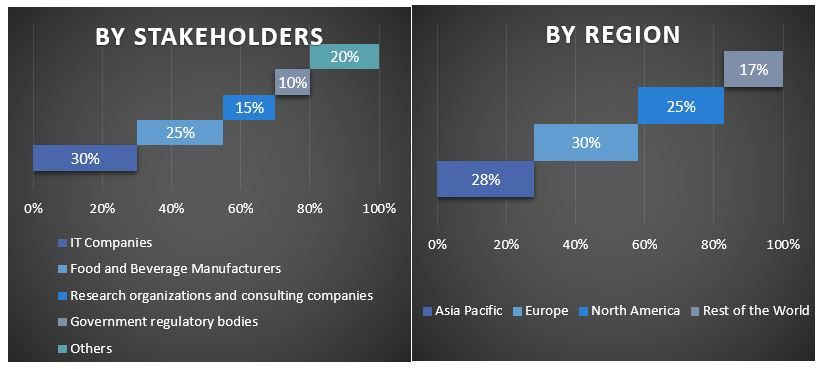
Market Engineering
The data triangulation technique was employed to complete the overall market estimation and to arrive at precise statistical numbers for each segment and sub-segment of the global Food Traceability. Data was split into several segments and sub-segments after studying various parameters and trends in the technology type, software, application, and regions of the global Food Traceability market.
The main objective of the Global Food Traceability Market Study
The current & future market trends of global Food Traceability were pinpointed in the study. Investors can gain strategic insights to base their discretion for investments on the qualitative and quantitative analysis performed in the study. Current and future market trends determined the overall attractiveness of the market at a regional level, providing a platform for the industrial participant to exploit the untapped market to benefit from a first-mover advantage. Other quantitative goals of the studies include:
- Analyze the current and forecast market size of the Food Traceability market in terms of value (USD). Also, analyze the current and forecast market size of different segments and sub-segments.
- Segments in the study include areas of technology type, software, application, and regions.
- Define and analyze the regulatory framework for the Food Traceability
- Analyze the value chain involved with the presence of various intermediaries, along with analyzing customer and competitor behaviors of the industry.
- Analyze the current and forecast market size of the Food Traceability market for the major regions.
- Major countries of regions studied in the report include Asia Pacific, Europe, North America, and the Rest of the World
- Company profiles of the Food Traceability market and the growth strategies adopted by the market players to sustain in the fast-growing market.
- Deep dive regional level analysis of the industry
Frequently Asked Questions FAQs
Q1: What is the global Food Traceability's current size and growth potential?
Q2: What are the driving factors for the growth of global Food traceability?
Q3: Which segment has the largest share of the global Food Traceability by technology type?
Q4: What are the emerging technologies and trends in global Food Traceability?
Q5: Which region will dominate global Food Traceability?
Related Reports
Customers who bought this item also bought

